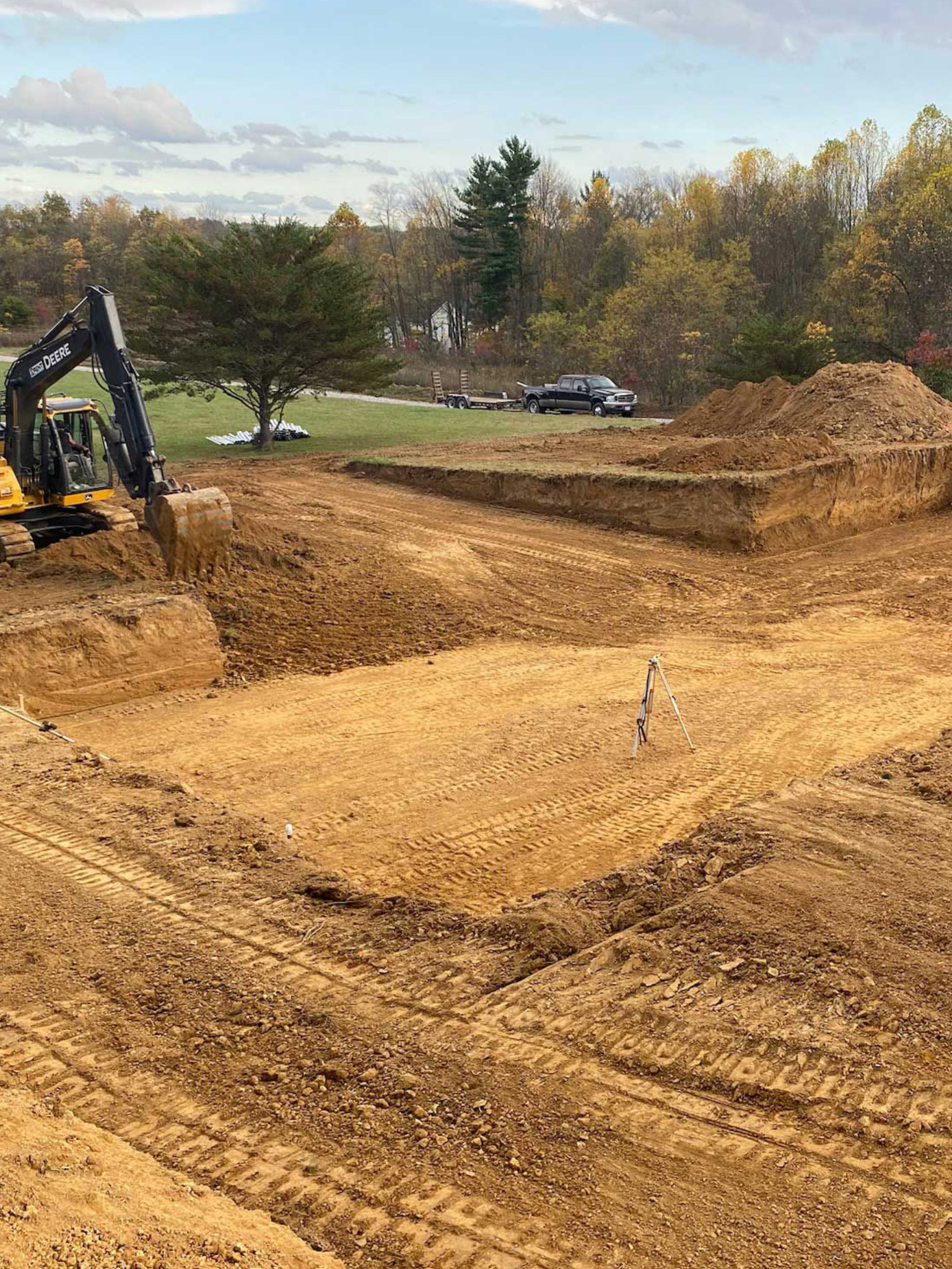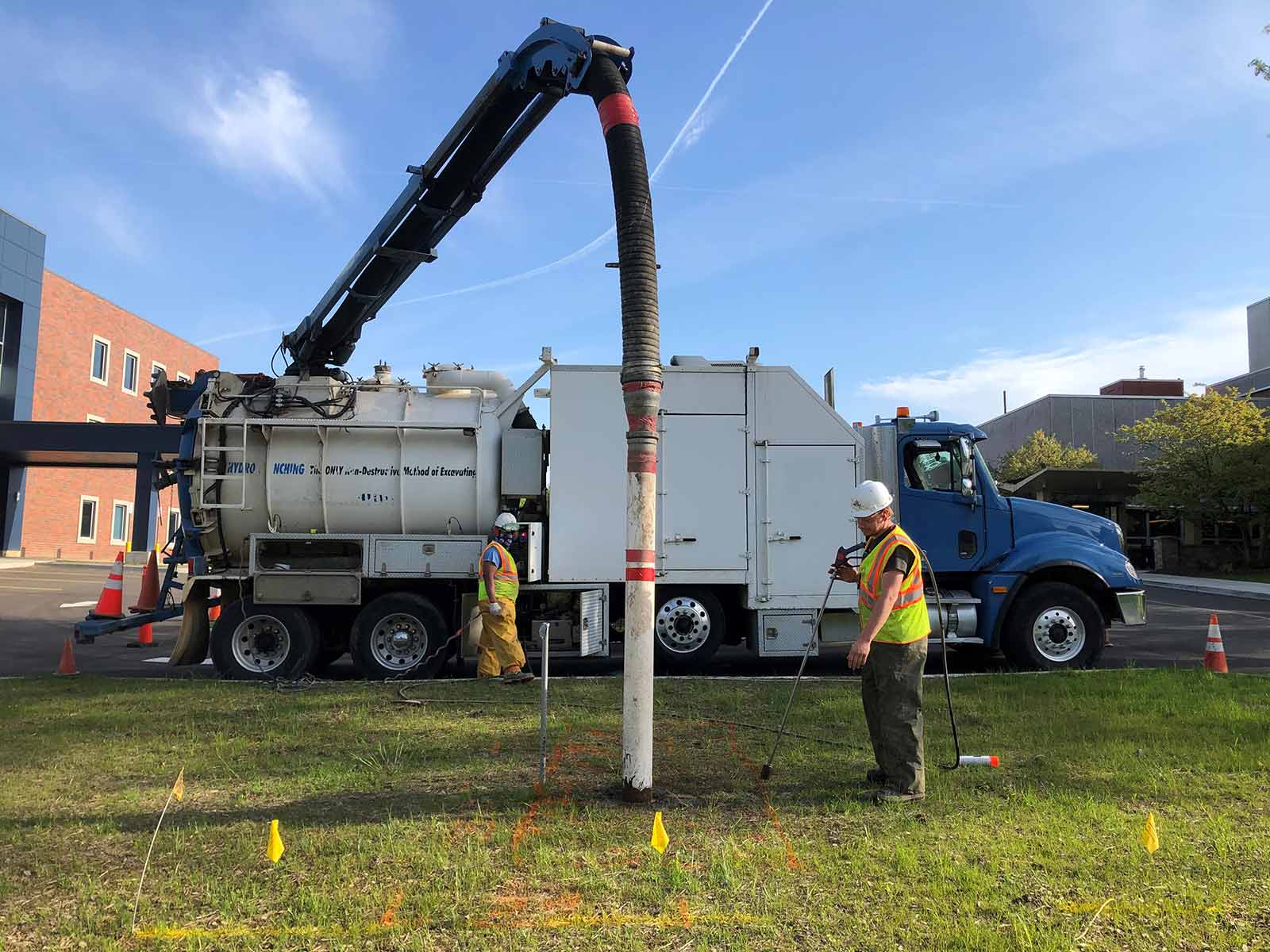Excavating Ohio - Leading Excavation Service Providers for Ohio Projects
Excavating Ohio - Leading Excavation Service Providers for Ohio Projects
Blog Article
Introducing the Art of Excavation: Pro Tips for Safe and Effective Excavating
As soil is transformed and earth is relocated, the complexities of excavation reveal themselves, demanding an eager understanding of equipment, dirt composition, safety methods, and environmental factors to consider. The proficiency needed to browse these aspects properly can imply the distinction between a successful excavation job and a potential disaster.
Value of Proper Devices
To make certain the safety and security and performance of any excavation project, using the ideal equipment is vital. The right devices not only boost efficiency yet also alleviate threats connected with excavating. Excavation projects vary in scope and complexity, varying from tiny household landscape design jobs to massive construction tasks. Despite the job dimension, having the proper equipment can make a significant difference in the result.
Excavators are essential pieces of machinery in any digging procedure. These functional equipments can be found in numerous dimensions to match various job demands. Small excavators are suitable for smaller sized tasks, while larger excavators tackle more extensive projects effectively. Backhoes are one more important equipment type, integrating the functions of a loader and an excavator in one machine. They are beneficial for tasks requiring flexibility and maneuverability.
Bulldozers stand out in jobs that require pushing huge amounts of soil or debris. By spending in the suitable tools, excavation projects can be completed securely, on time, and with accuracy.
Understanding Soil Make-up
An extensive understanding of dirt make-up is fundamental for carrying out excavation tasks with precision and safety. Comprehending the different kinds of dirt is essential as it directly influences excavation methods, equipment selection, and general task performance. Dirt composition usually is composed of 4 major parts: sand, silt, clay, and raw material. Each component has distinct residential or commercial properties that influence exactly how soil responds to excavation procedures.
Sand particles are the largest and offer good drain however use little cohesion. Silt particles are smaller sized than sand yet bigger than clay, supplying modest drain and cohesion. Clay bits are the smallest and offer high cohesion yet inadequate drain. Raw material, such as rotting plant material, affects dirt fertility and stability.
Prior to beginning excavation, carrying out soil examinations to identify its composition and features is vital. This info helps in selecting the ideal devices, executing precaution, and developing excavation methods tailored to the details soil problems - dump truck companies in ohio. By understanding dirt composition, excavation specialists can enhance task outcomes while making certain security and adherence to ideal methods
Safety Procedures and Protocols
Recognizing dirt make-up is the foundation whereupon safety procedures and protocols for excavation jobs are developed, making sure the health of workers and the success of the venture. There are a number of vital steps that need to be applied to mitigate threats and avoid crashes. when it comes to safety and security during excavation.
Primarily, prior to any kind of excavating commences, a complete inspection of the site ought to be carried out to determine any potential risks such as underground utilities, unsteady soil conditions, or close-by frameworks that might present a risk. It is critical to have a competent individual manage the excavation procedure to make sure that all security methods are followed purely.
Additionally, all workers involved in the excavation must be properly educated in secure excavating methods and the appropriate operation of equipment. By adhering to these safety and security actions and protocols, excavation tasks can be finished successfully and without case.
Reliable Excavation Preparation
When getting started on an excavation project, careful planning is important to make sure performance, safety and security, and successful end results. Reliable excavation preparation includes a number of crucial steps that are important for the smooth execution of the job. The initial step is to carry out a detailed website evaluation to identify any possible dangers, such as underground utilities or unstable soil conditions. This info is crucial for establishing a comprehensive excavation plan that over at this website consists of safety and security steps and run the risk of mitigation approaches.
As soon as the website assessment is total, the following step is to produce a clear timeline and timetable for the excavation activities. This includes establishing the sequence of tasks, tools requirements, and manpower appropriation. Proper scheduling assists stay clear of delays and makes sure that the task remains on track.

Moreover, communication among all staff member is critical during the planning phase. Clear directives, regular updates, and effective sychronisation are vital for a successful excavation job. By investing effort and time in precise planning, excavation teams can considerably improve productivity, reduce risks, and achieve effective end results.

Taking Care Of Ecological Considerations
With raising emphasis on environmental sustainability in building and construction methods, managing ecological considerations has actually become an essential element of excavation projects. Excavation tasks have the potential to influence the surrounding atmosphere through dirt erosion, debris runoff, environment disruption, and contamination of water resources. To mitigate i thought about this these dangers, it is necessary to apply finest techniques that focus on environmental management.

Moreover, appropriate waste administration is critical to avoid dirt and water contamination. get more Applying treatments for the disposal of harmful products, recycling of waste materials, and reducing making use of hazardous chemicals can considerably decrease the environmental impact of excavation tasks. By incorporating these methods into excavation planning and implementation, building and construction firms can make sure that their jobs are not only secure and effective however also environmentally liable.
Final Thought
Finally, mastering the art of excavation calls for a detailed understanding of appropriate equipment, soil composition, precaution, and efficient planning. By adhering to these guidelines and considering ecological aspects, excavations can be conducted securely and effectively. It is essential to focus on security and productivity in every excavating job to ensure effective outcomes.
As dirt is turned and earth is relocated, the details of excavation disclose themselves, requiring an eager understanding of tools, dirt structure, security procedures, and environmental considerations.To make sure the safety and performance of any type of excavation task, making use of the suitable devices is critical.A detailed grasp of dirt structure is essential for implementing excavation projects with precision and safety. Understanding the various types of dirt is essential as it directly influences excavation techniques, equipment choice, and total project efficiency. By recognizing soil composition, excavation specialists can improve task outcomes while making sure safety and security and adherence to best practices.
Report this page